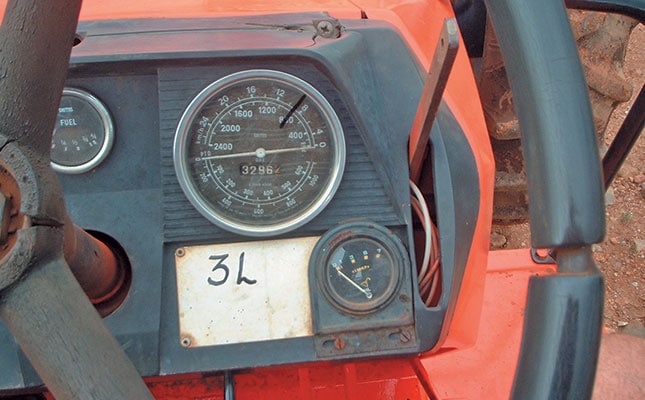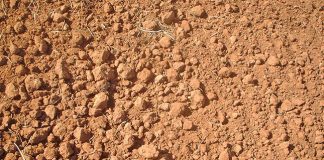
The consequences, especially with a herbicide, can be costly. Apply too much and the crop may be damaged or suppressed; apply too little, and weeds may be inadequately controlled.
Using more than is necessary is also a waste of expensive product.
READ Tractor of the year 2017: Case IH Optum 300 CVX
When calibrating the spray rig, first carry out the necessary calculations and adjustments on a section of road. Next, test the rig on the land; wheel slippage might result in a slightly higher volume than that used on the hard road.
The difference will not be enough to be harmful, but it is worth taking into account – especially as it may vary from land to land, depending on the condition of the soil and whether it is an even, prepared land or has furrows formed into beds.
Follow these steps to carry out calibration accurately and to ensure that the tractor driver follows the correct procedure for spraying:
Step 1
Measure a 100m section of road. Decide on a suitable tractor speed for spraying by selecting the correct gear and engine speed. Use a permanent marker to mark the engine revolutions on the glass of the rev counter. In a suitable spot, mark the gear to be used.
Step 2
Bring the engine up to the correct speed and adjust the spray pressure to get the correct droplet size for the operation. Mark the spot on the gauge where the pressure needle should remain.
With a herbicide, use a flat nozzle and adjust the pressure so that the droplets are the right size: the spray should not be so fine that it drifts away. Getting this right involves both pressure and nozzle size. When checking for drift, look at the spray from the front and the back; it is easier to see the fine droplets from certain positions.
Step 3
Measure the time it takes to drive the tractor for 100m and record this in a suitable place.
Step 4
Place a measuring vessel under a nozzle and let if fill for the time it took the tractor to cover 100m.
Step 5
Multiply this volume by the number of nozzles on the boom to obtain the volume of spray mixture applied over the width of the spray boom every 100m. If the spray boom is 10m wide, you’ll have the amount of mixture applied to 1 000m² (100m x 10m). Multiply this by 10 to obtain the volume in litres applied to 1ha.
Before you spray the land, take the volume of the spray tank and calculate the area that the tank should cover. If you end up covering slightly less area due to the condition of the soil, make the new calculation and adjust the spray accordingly.
Step 6
To double-check, take the measuring vessel and walk behind the boom, collecting spray from a nozzle over the time it takes the tractor to cover 100m. Measure this volume to ensure that it conforms to your calculations.
Step 7
Check that each nozzle sprays correctly and all nozzles deliver the same amount. Inspect for damaged nozzles. Remember that nozzles wear out and deliver more mixture as a result.
Most farmers use the correct product but neglect calibration as it requires extra work. The effort is worth it, believe me!
Bill Kerr is a vegetable specialist and a breeder of a range of vegetables.












